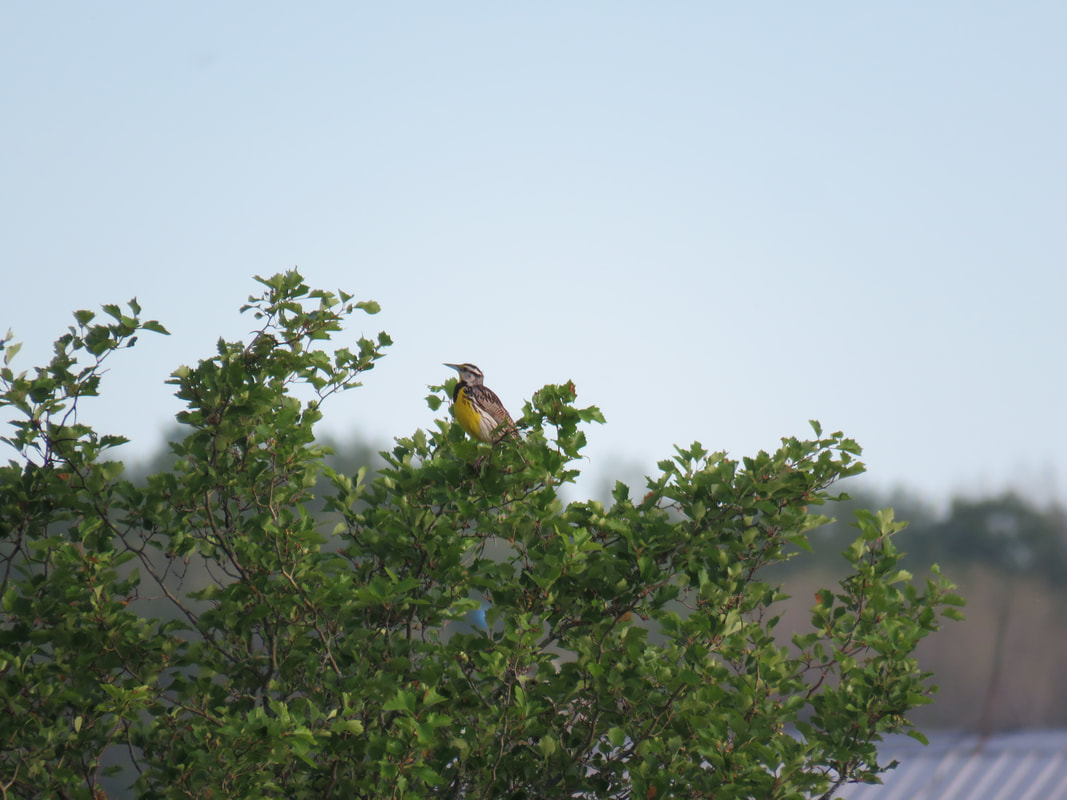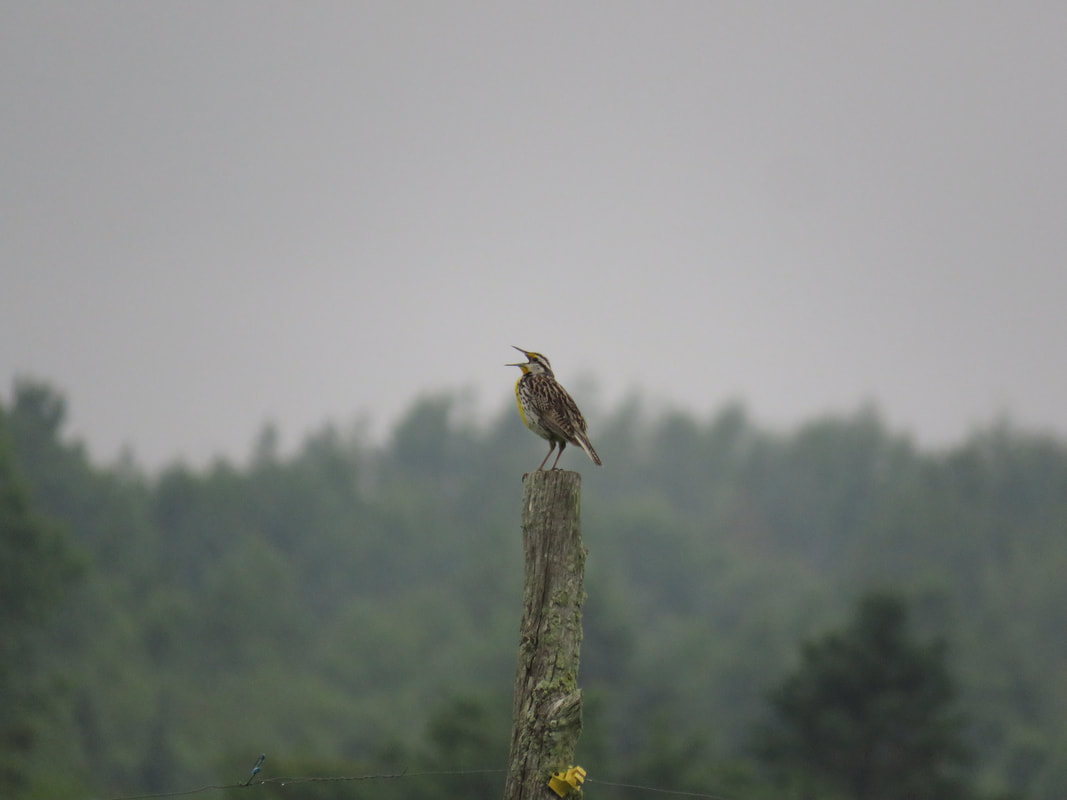Desbarats Bison Farmer Improves Efficiency
August 20, 2018
|
This summer, The Kensington Conservancy has been raising awareness with local farmers regarding grassland bird species at risk. The ecological issues involved with this topic make it arguably one of the most controversial and complicated problems to solve within the species at risk community. For the Desbarats Species at Risk Bird Inventory, Outreach, and Education Project, we are focusing on Bobolink and Eastern Meadowlark. These bird species are listed as “threatened” on the provincial species at risk list. In this instance, threatened means that if action is not taken to prevent these species decline, they will inevitably become endangered.
Both Bobolink and Eastern Meadowlark nest in hay fields - a necessary crop required to feed beef and dairy cattle. These grassland birds are in their most vulnerable nesting period during the period of June until mid-July. Unfortunately, this is also usually the time when the first cut of hay is brought in. |
To get around this issue, there are two main best management practices (BMP’s) that can be implemented so that the cattle are fed, and the birds can complete their nesting cycle. One of these best management practices is delaying hay harvest. The major issue with this method, is that the quality of the hay deteriorates once it starts to flower. This best management practice is seemingly only suitable for those who are using their hay for bedding or for anything not requiring a high-quality cut.
|
Another best management practice (which does not seem to get as much attention) is rotational grazing. The name says it all with this one without providing too much detail. However, with rotational grazing the cattle graze for short periods before moving to subsequent pastures. With this method, hay cannot flower, and so retains its protein value for the season duration. This is helpful to grassland birds as it allows hay to not be cut too short, meaning the active nests are not disturbed.
John Karhi, a bison farmer in the Desbarats, Ontario area has, decided to incorporate rotational grazing into his farming practices. Rotational grazing will in this case, mitigate the need to continue harvesting hay each year. “It’s better for animal health and the environment, a lot less equipment is used, lower cost, good yield, operating cost lowers, input costs go down. You’re one with nature is what you are. There’s also no spraying, reduces labour, and there’s no spreading of manure” Karhi says. |
|
John has around 500 bison and approximately 2000 acres of land. He is planning to install troughs and water lines as a water source to his livestock, while at the same time keeping them away from naturally occurring rivers to prevent aquatic contamination. He is also planning to section off his pastures in order rotate the bison from pasture to pasture. The bison will be left to graze within each pasture for approximately three days at a time before being rotated to the next one. Each pasture will be given a rest time of about 45 days.
“Animals are healthier, are getting exercise, and they’re in the environment,” says Karhi. For farmers who are interested in implementing a similar system into their farming practices, there are incentive programs available designed for projects like these. |
|
Ontario Soil Crop Improvement Association has made available a Species at Risk Farm Incentive Program. This program is designed to financially assist landowners with the modification of their farming practices to conserve species at risk in Ontario.
For farmers who are interested in implementing a similar system into their farming practices, there are incentive programs available designed for projects like these. Ontario Soil Crop Improvement Association has made available a Species at Risk Farm Incentive Program. This program is designed to financially assist landowners with the modification of their farming practices to conserve species at risk in Ontario. For more information on The Kensington Conservancy’s Desbarats Species at Risk Bird Inventory, Education, and Outreach Project, click here. Article and photos by Nathan Earle, Species at Risk Field Technician for The Kensington Conservancy. |




